Speed Queens, A Secret History of Women in Motorsports
 by Rachel Harris-Gardiner
by Rachel Harris-Gardiner
ANOTHER LOOK
The U.S. Supreme Court holds that dissent among its justices is necessary to public debate. (Historical tidbit: it took six decades to adopt the opinion expressed in its first dissent.) Well, even something as fact-driven as a nonfiction book engenders diverging opinions so we are now adding another interpretation of the book’s scope and methods. Scroll on down to the end of the first review.
At the outset Speed Queens promises to provide its readers a “history of women in motorsport, from the very beginning in 1897 to the modern era.” Next perusing the 18-page index lent an additional indication of just how many women were going to be populating the pages. Such did prove to be the case although brevity ruled which the index also had hinted might be the case as most of those indexed names had just one single page number associated with each.
Reading author Rachel Harris-Gardiner’s biography had raised my hopes for what this, her first book, might reveal as she has apparently been interested in, and researching about, women in motorsport since 2001 while still a student. Then in 2017, nearing 40 years of age, she made a decision to eschew pursuing an academic life preferring to become a full-time motorsports writer and eventually achieving writing regularly for Autosport and Motorsport News.
Then, as reading proceeded, while absolutely being introduced to many women whose names I’d not previously heard or known about, information about each was so barebones as to be more of a tease about what more there might be to know about each. Not surprisingly a large number of those women were or are in the British Isles and Europe for Harris-Gardiner is British and resides in her country of birth.
Thus, no surprise, Brooklands is often mentioned and that is supported by the multiple lines of page numbers of its listing in the index. Given Brooklands is in the author’s native land, it makes it all the more puzzling how her words regarding the grande dame writer of romance novels and by royalty herself named Dame Barbara Cartland, an honor the author never bothers to acknowledge, could be less than absolutely correct and quite incomplete.
Over Cartland’s lifetime she wrote and had published at least 732 books. Early in her career she was a presence at society events including some at Brooklands. In 1931 she was behind a group of society ladies running at Brooklands in borrowed MGs which some today mention as the first women’s race at Brooklands. In truth that first-ever women’s driving competition at Brooklands, per Bill Boddy, took place the year following its 1907 opening with the running of the Ladies Bracelet driving competition.
Following her society ladies racing event, Cartland had persuaded track management to set aside a reading room for ladies. Today the Brooklands Museum features a replica of that original Ladies Reading Room that Harris-Gardiner incorrectly calls merely a “reading room,” with none of the wonderful and real history behind it shared with her book’s readers. By such practices is history short-changed.
The entire book would have benefited enormously had she practiced—or her publisher insisted on—some of those academic disciplines that would then enable a reader to follow paths of interest and sort out contradictory information in the text. The complete lack of any bibliography or chapter notes is sorely felt especially when the book’s narrative repeatedly alludes to, but never mentions by name, “sources” and “photographs show.” That last one indicates that images are available. Yet, none of these vintage and likely interesting photos are shared in the book. Rather, the 13 black and white photos on the four-page insert appear to be all stock photos and many are contemporary. None are credited and some have only a very thin relationship to any of the text.
Despite its shortcomings, the book absolutely makes clear by the sheer number of ladies from all walks of life and around the globe who are identified by name with a few sentences about each that women have been motorsport participants since the beginning thus debunking what is generally believed or perceived. Anyone wishing to read a bit more fulsomely about the women in this book and others and also see photos of them is commended to Harris-Gardiner’s blog. Hopefully other books will be forthcoming from this and other writers telling these and other Speed Queens stories more fully.
Won the 2023 RAC Motorsport Book of the Year award in the “Below £50” category.
Copyright 2023 Helen V Hutchings, SAH (speedreaders.info)
ANOTHER LOOK
“She’s no lady. If she was, she’d be at home. There’s a lot of difference in being a lady and being a woman.”
—“King” Richard Petty, on Janet Guthrie, 1976
Janet Guthrie was a nuclear physicist as well as a decent race driver, but that didn’t impress NASCAR dinosaur Petty much. He opposed Guthrie even entering the World 600 NASCAR race at Charlotte in 1976. As the author of this excellent work writes, Petty’s comments were “hardly the words of a gentleman” but they were no surprise either, because men have been sneering at the women who have had the temerity to race cars for over a century from the start, and they haven’t stopped yet. That is why this book is a valuable and informative account of women’s history of participation in motorsport, and the fact that it is written by a motorsport journalist adds insight and authority.
I share the author’s love of historic Formula Ford racing, the formula that regularly features the best wheel to wheel racing in the UK, but Harris-Gardener’s ambitious and far-ranging book takes us back to the dawn of motorsport.
My knowledge of pre-WWII motor racing is relatively superficial but it’s downright weak when it comes to the races that took place when Queen Victoria was still on the throne. I’m not alone, and the author herself acknowledges this by saying that the stories she recounts “(have not) been suppressed but seem to have slipped through the net of history’s narrative.” Races such as the Championnat des Chauffeuses, held at Longchamps in 1897, and contested by tough, feisty women like Ellen Jouanny and Léa Lemoine, on gasoline-powered tricycles. When I heard about the book, I feared it would concentrate on the usual suspects, from Kay Petre to Danica Patrick perhaps, via Pat Moss and Michèle Mouton—but although all appear, so do literally scores of other women racers, many of whom were unknown to me.
The book is written in a spare and accessible if fact-heavy style and it needs to be savored slowly to avoid the reader becoming overwhelmed by the level of detail. This book could double as a thesis, and it is testament to the level of research the author has undertaken that almost half of the text is devoted to the period ending in 1939. The chapter titles covering that era give a flavor of the content and I enjoyed the romp through Showgirls, Society Ladies and Bad Girls. This book is far from hagiographical and the author doesn’t shrink from discussing the unpalatable political views of some of its subjects. Take Violette Morris, the cross-dressing, chain-smoking, Bol D’Or winning, sex-pest racer turned Gestapo torturer who was shot dead in her Citroën in 1944. Or Fay Taylour, the former Brooklands racer and British Union of Fascists member who ended up being interned in 1940 as a Nazi sympathizer and possible spy. Bad girls indeed . . .
The author shrewdly reflects that, postwar, “The social climate had changed . . . the national mood was one of longing for the comfort of home and reassuring social order. . . .” Here in Britain, that crushing formality and grey conformity was the national mood music until The Beatles turned the lights back on in the Autumn of 1962. Women continued to compete though, and in the United States they took part in such events as the Powderpuff Derbies and Lady Leadfoots, and at least NASCAR (perhaps surprisingly?) allowed women racers, unlike the AAA. This British reviewer loves to read about NASCAR’s rebel chic, not least for the wonderful names peppering its history. Silverstone might boast of its heritage of Clarks, Hills and Hamiltons, but how prosaic those names sound against the rhinestone sparkle of Ethel Flock Mobley and her mom, ‘Big Mama’ Maudie Flock. And as for the NASCAR folk called Hickey Nickles, Peachtree Williams and Mopsey Pagan, all (even) I can say is . . . Hell yeah!
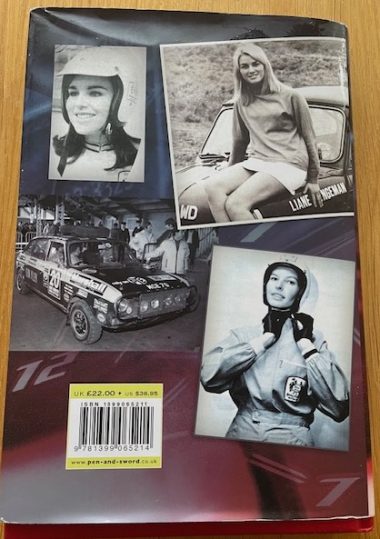 Names like Anita Taylor, Christabel Carlisle, and Rosemary Smith evoke the time when the Sixties had really started to swing, but the book also mentions the lesser-known names from the era, like Liane Engeman, who forged a decent career in the saloon car races that enlivened nearly every race meeting. The ladies might have been racing, but the author also describes the extraordinary level of sexism that still permeated every stratum of society. May I give you FLIRT–The First Ladies’ International Racing Team? This British team with the terrible name fielded a Mini Marcos in the 1967 season for a triumvirate of drivers including former Ford Galaxie racer Jacquie Bond-Smith. There’s more—the book’s cover picture is an F100 car on the Brands Hatch grid, surrounded by the miniskirt clad sextet who made up the Carmen Curls team. Their uniform even “included the ‘latest fashion wig’ from Carmen.” Not for the first time, I am reminded just how foreign a country the past can be. A little more fitting is the name of the all-female Iron Dames team, who race in the 2024 WEC and IMSA. But who knows, will that name have become another anachronism by 2070?
Names like Anita Taylor, Christabel Carlisle, and Rosemary Smith evoke the time when the Sixties had really started to swing, but the book also mentions the lesser-known names from the era, like Liane Engeman, who forged a decent career in the saloon car races that enlivened nearly every race meeting. The ladies might have been racing, but the author also describes the extraordinary level of sexism that still permeated every stratum of society. May I give you FLIRT–The First Ladies’ International Racing Team? This British team with the terrible name fielded a Mini Marcos in the 1967 season for a triumvirate of drivers including former Ford Galaxie racer Jacquie Bond-Smith. There’s more—the book’s cover picture is an F100 car on the Brands Hatch grid, surrounded by the miniskirt clad sextet who made up the Carmen Curls team. Their uniform even “included the ‘latest fashion wig’ from Carmen.” Not for the first time, I am reminded just how foreign a country the past can be. A little more fitting is the name of the all-female Iron Dames team, who race in the 2024 WEC and IMSA. But who knows, will that name have become another anachronism by 2070?
Although the scope of the book is ambitious, perhaps the author might have cast her net even wider, as “motorsport” covers a wider range of disciplines than the race and rally drivers who are its principal focus. Not only are women increasingly seen in high profile roles off track—such as F1 journalist Lee Mackenzie, team principal Monisha Kaltenborn (Sauber boss 2010–17), and Hannah Schmitz (Red Bull Principal Strategy Engineer)—but they have also starred in other disciplines. Top Fuel drag racing isn’t for the faint-hearted but two of its biggest European stars are Anita Makela of Finland and Switzerland’s Jndia Erbacher, following in the footsteps of US legend Shirley Muldowney. And I’d like to have seen a respectful nod to speed record breakers like the late Jessi Combs.
With that reservation, perhaps remediable in the second edition the book deserves, I recommend this book as an affordably priced, well written, and informative treatise on a neglected subject. The illustrations add little to the reader’s enjoyment as they are small and largely unremarkable but who cares? We’re all assailed by myriad images in the virtual world and it’s an analog pleasure to immerse oneself in prose.
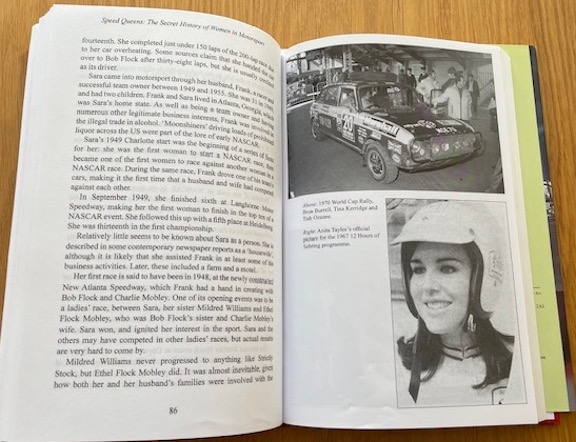
In motorsport, as in most activities, women haven’t escaped the dark forest of misogyny yet. In 2018 you could hear the wailing and gnashing of teeth when Formula One eventually realized that it wasn’t 1974 any more and got rid of grid girls. The online community of Neanderthals was enraged that “their” sport had fallen victim to the woke brigade. Well, if woke means stopping trussing up young women in Playboy Bunny gear for the gratification of middle-aged men, then count me in. We also freight every talented young woman racer with absurd degrees of expectation. In the UK Jamie Chadwick had barely got out of club racing before the media were speculating about her likely ascent to F1. As the author recounts, the sport has seen very few women reach its highest rung, and it’s now almost half a century since Lella Lombardi scored half a point in the Spanish Grand Prix. But is that so important? Hardly; F1 has a very low driver turnover, and has become almost a closed shop to newcomers. Ask the Andretti family about that. But women can and do star in many other disciplines, rallying among them, and so who better to punctuate the end of this review than the feisty and talented Michèle Mouton? The book reminds us about the time she—forgive me—whupped some good ol’ boy ass by winning Pikes Peak Hill Climb in 1985. Al Unser’s ego couldn’t take it and Mme Mouton’s response to his complaint was reportedly “if you had any balls, you’d race me back down as well!”
To which I can only say—bon travail!
Copyright 2024, John Aston (speedreaders.info)


 RSS Feed - Comments
RSS Feed - Comments


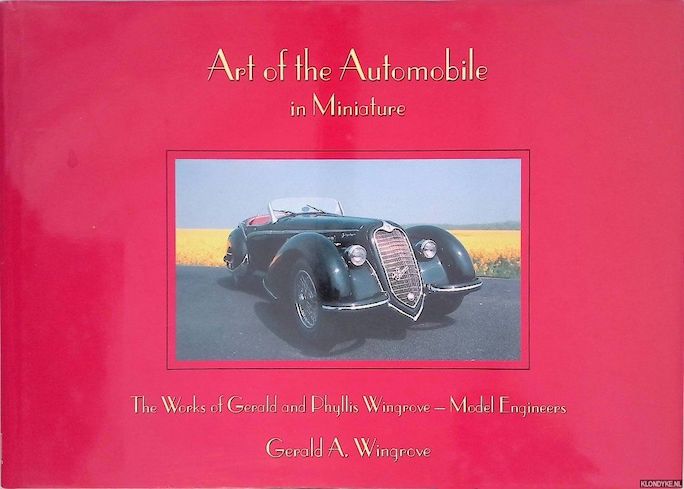

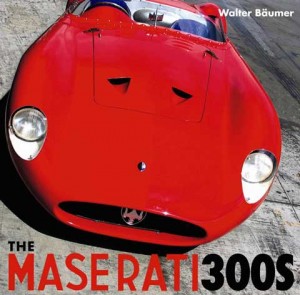



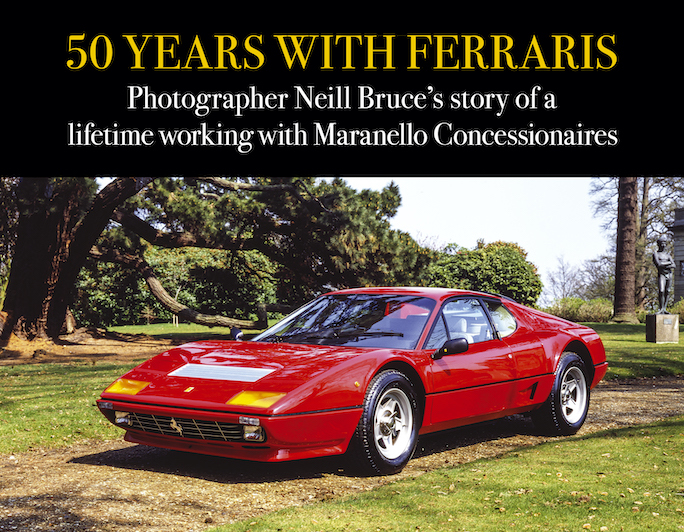
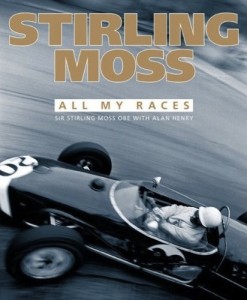

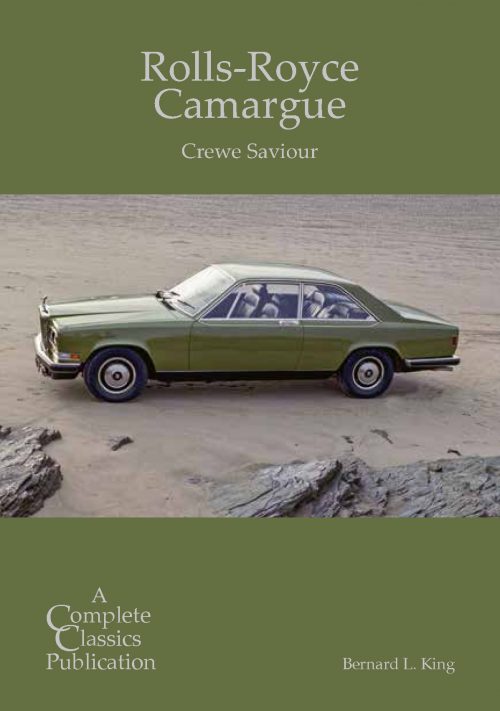

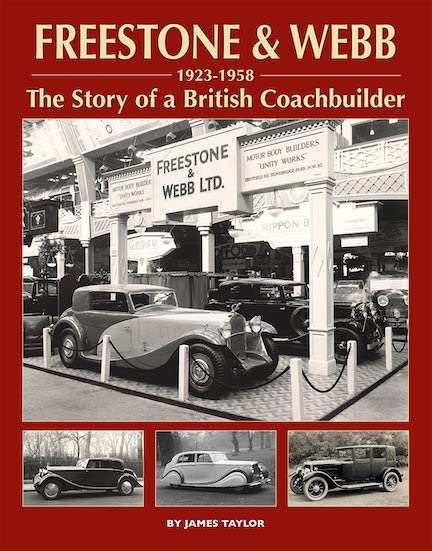


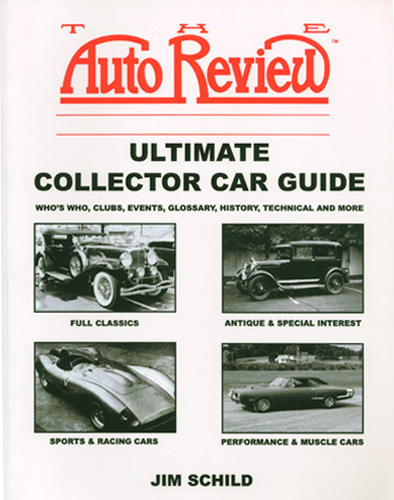



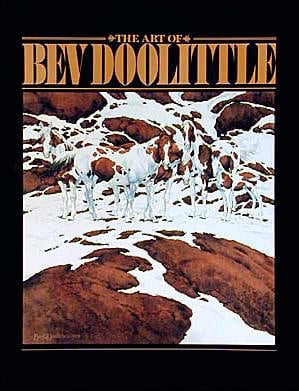

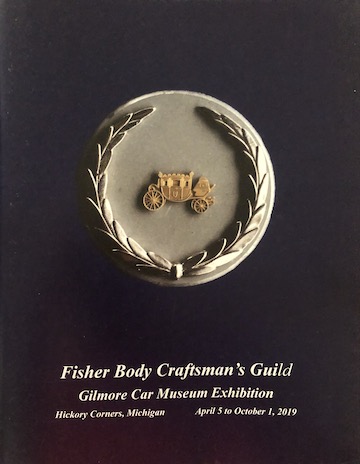


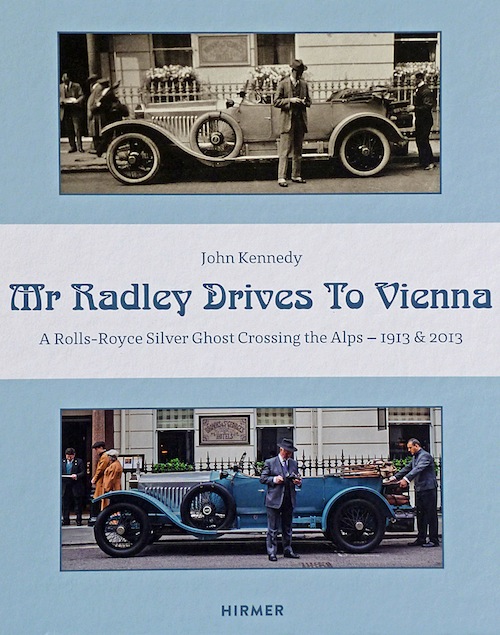




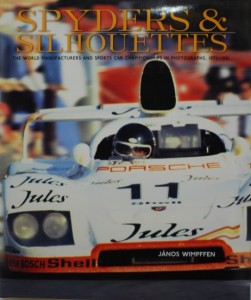

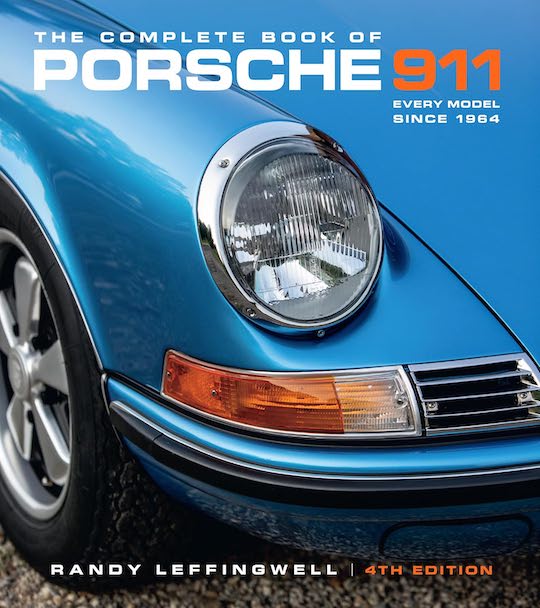
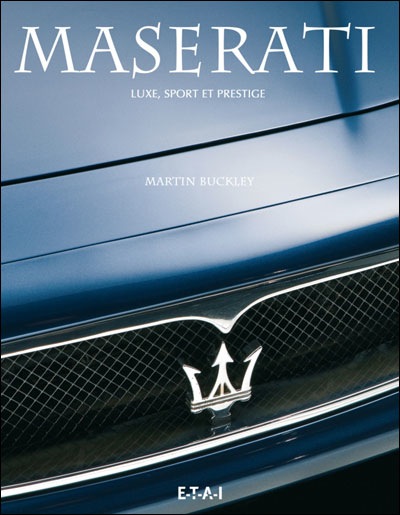
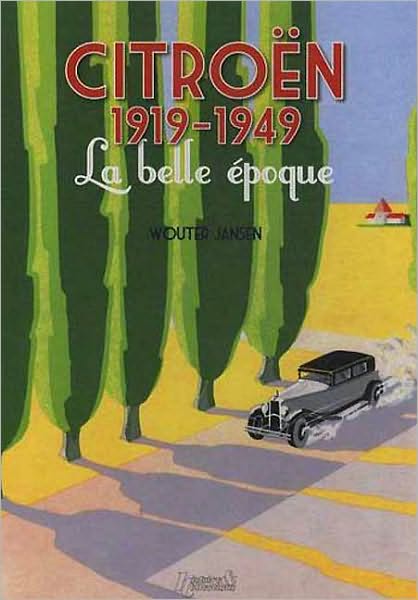
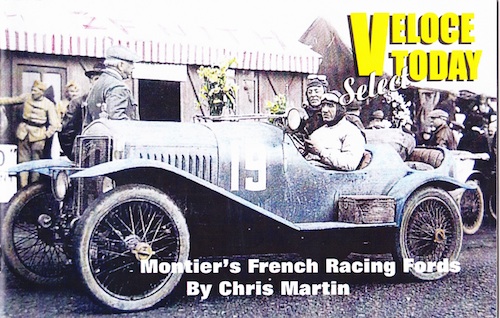

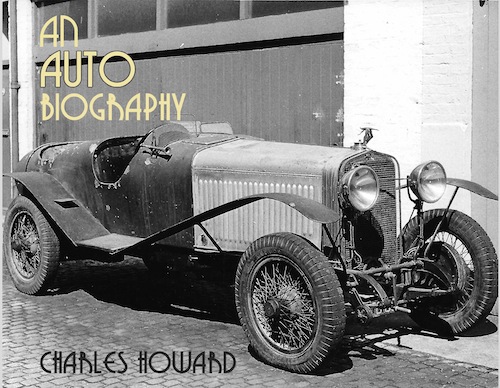

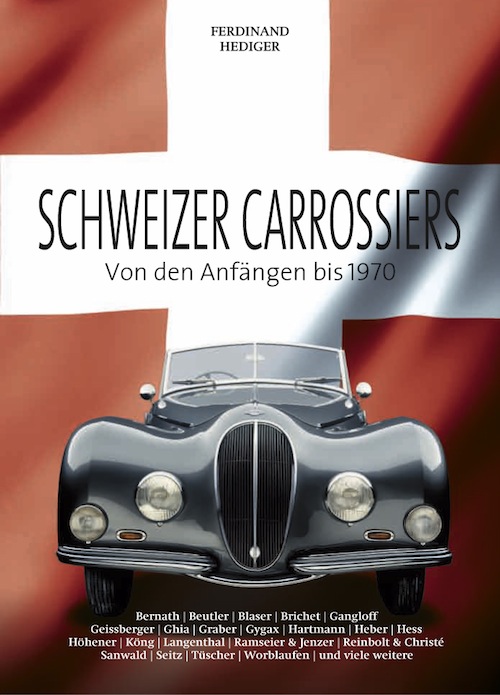

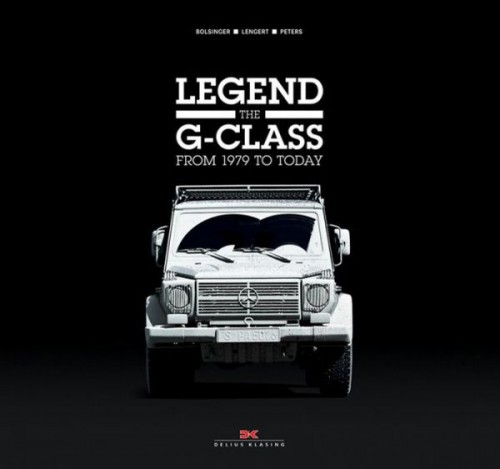




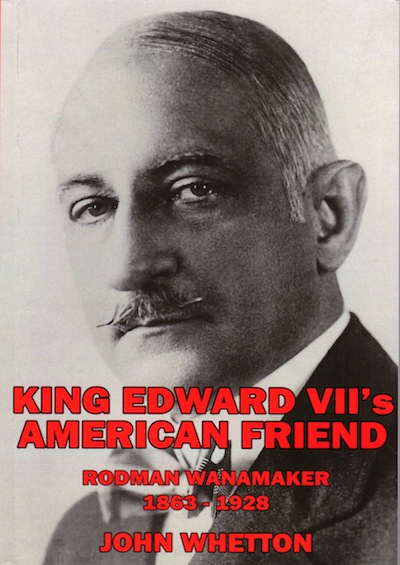


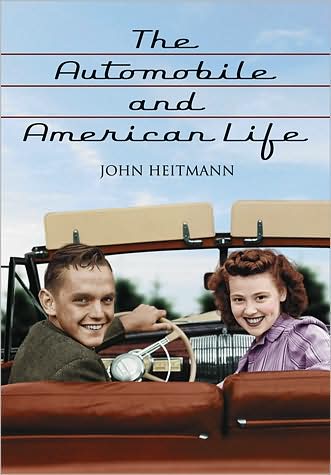


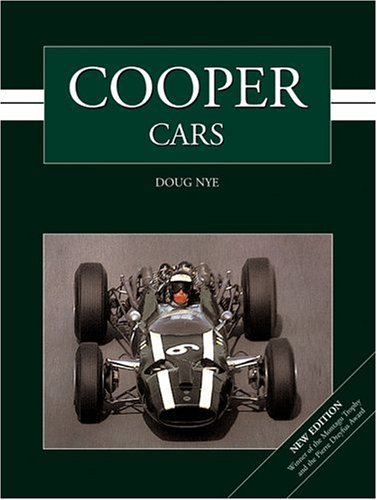
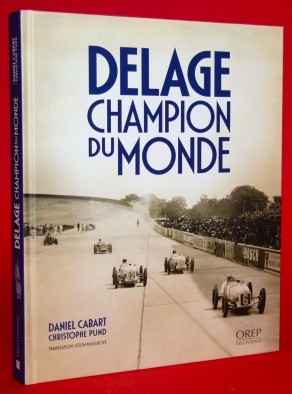
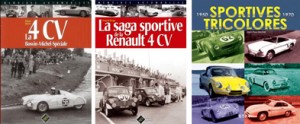


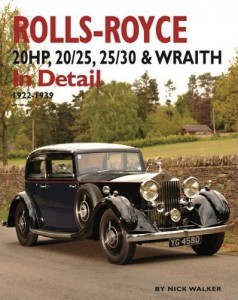


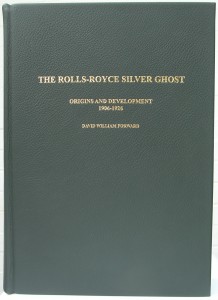

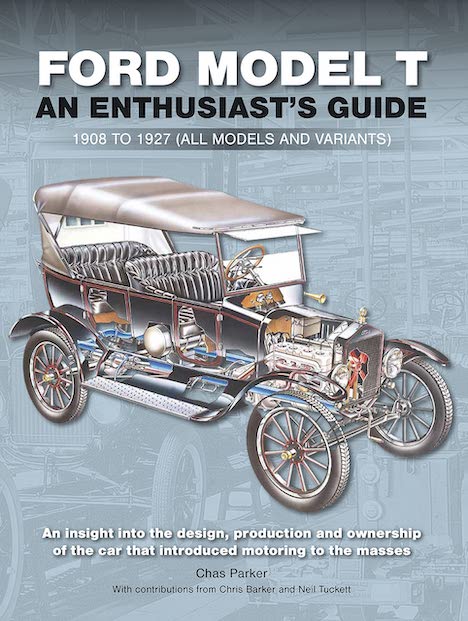


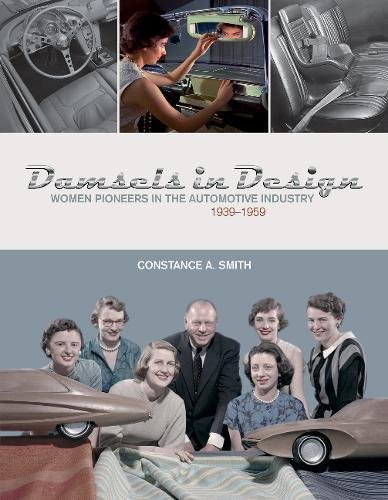



 Phone / Mail / Email
Phone / Mail / Email RSS Feed
RSS Feed Facebook
Facebook Twitter
Twitter